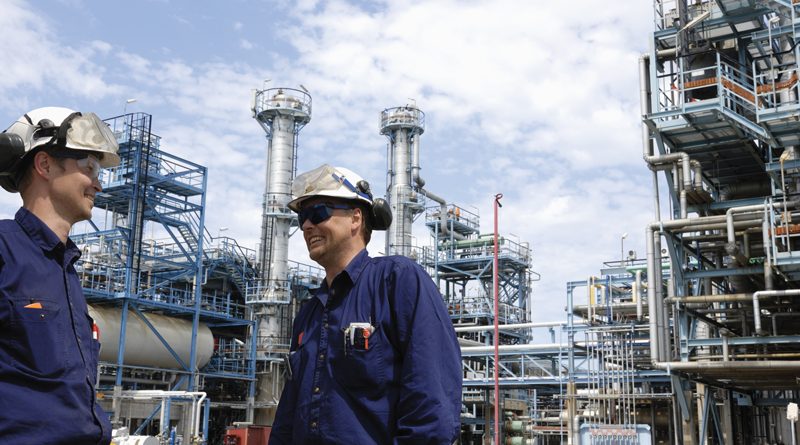Process Radars in Asphalt Production
The new generation of Endress+Hauser process radars has been used in a refinery for a level measurement of the stocks of SBS polymer. This is a synthetic rubber, used, in this case, to produce self-draining asphalt
di Luca Romani
As Product Manager for level measurement at Endress+Hauser Italy, an important part of my job consists in providing consulting for specific applications. In practice, clients, just like colleagues from the sales force, submit measurement tasks to me and I help them to “do the right thing” thanks to decades of experience accrued on the field. My company offers a complete ran ge of products for level measurement, and as a consequence it is easy to find the sensor best suited for the application. Complicated applications are however always just round the corner, so before making a choice it is better to analyze in depth all the conditions which could influence measurement: the type of product which needs to be measured, the geometry of the tank, the position and the height of the installation pipe, the position of the product loading entrance, its dynamics and more.
The importance of the dielectric constant
I was recently contacted by a refinery in central Italy for a level measurement on a stock of SBS polymer, a product which I was quite frankly unaware of. SBS, the acronym for Styrene-Butadiene-Styrene, is a synthetic rubber widely used in the making of tires, but in our case it is added to tar to produce self-draining asphalt, providential for driving on motorways when it rains. The client had already used an open-space radar and a guided wave radar (GWR) by other manufacturers with unsatisfactory results, and this in itself sounded an alarm bell. The most important parameter to define whether a microwave level meter (space radar or GWR) is applicable is the product’s dielectric constant: the greater the dielectric constant, the greater the reflected echo and therefore the efficiency of the measurement. It is however not always simple to trace this value, and research carried out on the web had provided scarce, if not outright unreliable, results. Only one website did report a value for the dielectric constant of 6.5 but, considering the composition of the polymer, this did not seem reliable. I therefore asked for a sample of the product to measure directly its dielectric constant.
Tests with radars for bulk solids
The infamous SBS was suspicious from the very start: very light, expanded, with lots of air and little product. Measuring the dielectric constant then confirmed the doubts: DK < 1,3. We are therefore talking about a value which is very complex to measure. In application cases where there are uncertainties regarding reliability, and if general conditions allow it, we offer to carry out tests with demo instruments. We therefore sent to the refinery Endress+Hauser’s best model of radar for bulk solids: Micropilot FMR67. This is a frequency modulated FMCW radar with 80 GHz emissions, a cutting-edge product in the radar technology for the process industry.
These are some of FMR67’s distinctive properties: maximum range 125 mt, emission angle limited to 3.5° with a DN80 antenna, geometry of the “drip off” antenna which minimizes deposits and condensation, inclination device on the flange to direct it towards the product, rinsing air on the connection to the process for deposit cleansing operations.
The product has been designed in compliance with the IEC 61508 norm, and it is therefore suitable for SIL2/3 security systems; it may also be equipped with Heartbeat Technology functions to control, verify and monitor process conditions.
Functioning is optimal starting from basic programming
Once the radar is installed and the basic programming (empty and full gauging for the setting of the current output), the client asked me to check the validity of the measure personally, so as to carry out the necessary optimizations to obtain the maximum reliability, considering the nature of the product requiring measurement. Actually the radar, simply installed, configured and left perpendicular without inclination, was already functioning perfectly, which is why mine was more of a courtesy call than an efficacy control. The quality of new 80 GHz radar technologies in FMCW frequency modulation simplifies even the apparently most complex applications.

